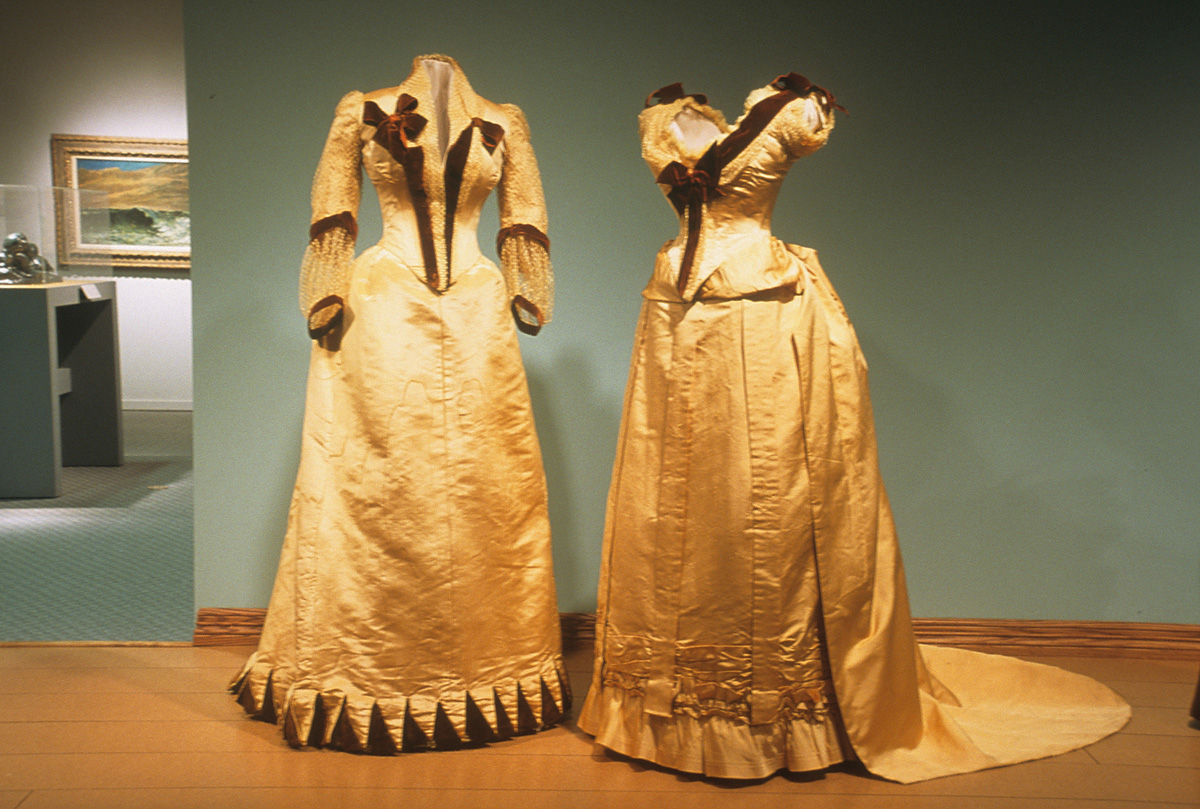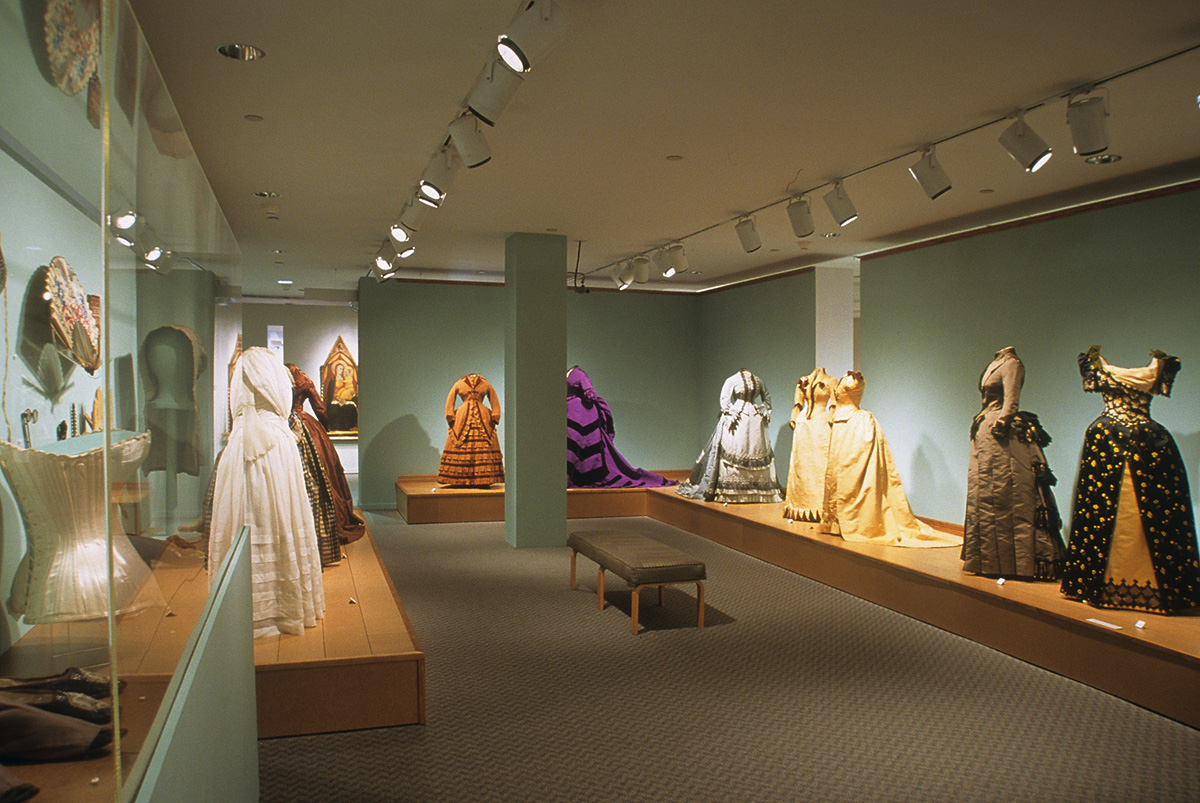I have had the privilege of being the costume conservator for the Phoenix Art Museum’s Fashion Design Department for the past 25 years. One of the many problems costume conservators have when treating artifacts is locating fabrics to use while repairing objects. It is extremely difficult to match new fabric with original fabrics found on a garment that is many years old. The new fabric doesn’t have the same thread count, isn’t the exact color, drape or weight so at times repair cannot proceed because the correct new fabric is nonexistent.
In the summer of 2003, Dennita Sewell, curator of fashion design, invited me to come to the museum to view objects for the upcoming exhibit, Beauty and Style in 19th Century American Fashion. Dennita brought forth from one of the vault’s archival boxes an 1890s two- piece gown with stand-up collar, very full set-in sleeves, center front opening constructed from brown silk velvet, gold silk taffeta, silk faille, and yellow dotted net silk fabrics. It was a wonderful ensemble except the dotted net silk fabric located on the sleeves was very badly damaged.
Silk textiles from the late 19th and early 20th centuries were often impregnated with metallic salts that over time cause damage. The damaged silk looks like it has been ripped in many places but the deterioration is the result of fiber breakage rather than tearing. The fabric on these sleeves looked like a multitude of tears parallel to one another about ¼ inch apart. There was no way to repair the sleeves so the garment would look good enough to be displayed and my mind was spinning on how to tell Dennita that she would need to find another garment for the exhibition. But then Dennita reached into the box again and withdrew three yards of yellow dotted net silk fabric, an exact match to the deteriorated sleeve fabric. The gown’s dressmaker had retained the leftover fabric, given it to the owner of the dress who had kept it during her lifetime. Then this remnant was saved with the dress for more than a hundred years and donated to the museum along with the garment. To have excess original fabric to use for a treatment had never happened to me before and has never happened since. We had a solution to the degraded, metallic salt-laden silk fabric found on the sleeves. New sleeves could be constructed.
At my lab, I removed the deteriorated sleeves, drafted a pattern, created new sleeves using the saved yellow dotted net silk fabric and sewed them into the bodice. Voila! A luscious, gorgeous authentic late 19th century artifact was ready for display.
Martha Winslow Grimm, Costume and Textile Conservator


